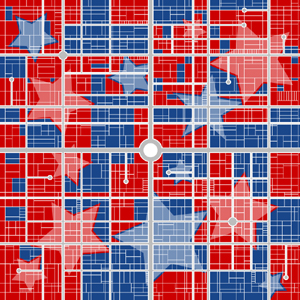Federal court strikes down map of Ohio congressional districts for 'invidious partisan intent'

A special three-judge court has struck down a map of Ohio’s congressional districts because it was drawn with “invidious partisan intent” by Republican lawmakers.
The decision follows federal rulings striking down maps drawn to favor one political party over the other in Maryland, Michigan, North Carolina, Pennsylvania and Wisconsin, report Bloomberg, the Wall Street Journal, the Washington Post and the New York Times. How Appealing links to additional coverage of the May 3 Ohio ruling. A press release by the American Civil Liberties Union of Ohio is here.
The U.S. Supreme Court will have the final word. It is considering the constitutionality of partisan gerrymandering in cases from North Carolina and Maryland.
The Ohio decision could “have a shelf life of a month and a half” if the Supreme Court doesn’t allow claims of partisan gerrymandering, said Edward Foley, a law professor at the Ohio State University, in an interview with the Wall Street Journal.
Under the Ohio map, Republicans hold 12 out of 16 congressional seats while winning 52% of the statewide vote.
The Ohio map is “so skewed toward one party that the electoral outcome is predetermined,” wrote Circuit Judge Karen Moore of the 6th U.S. Circuit Court of Appeals at Cincinnati. “We conclude that the map unconstitutionally burdens associational rights by making it more difficult for voters and certain organizations to advance their aims, be they pro-Democratic or pro-democracy.”
Also on the panel were U.S. District Judges Timothy Black of Cincinnati and Michael Watson of Columbus. Moore and Black are Democratic appointees, and Watson is a Republican appointee.
Ohio Attorney General Dave Yost, a Republican, said the state would seek a stay of the decision and file an appeal. He noted that Ohio voters approved a constitutional amendment that sets up an independent redistricting commission. According to the New York Times, the amendment requires congressional maps to win approval from at least 50 percent of the minority party in the state house. If minority approval isn’t given, the map will be drawn by the commission.
The decision is Ohio A. Philip Randolph Institute v. Householder.



